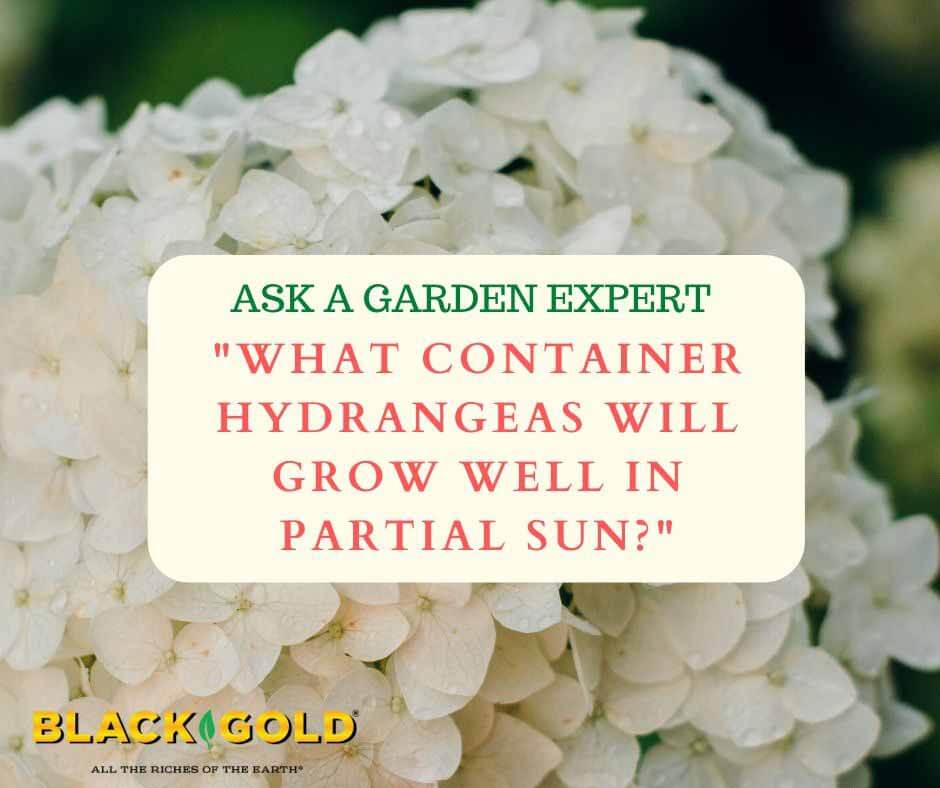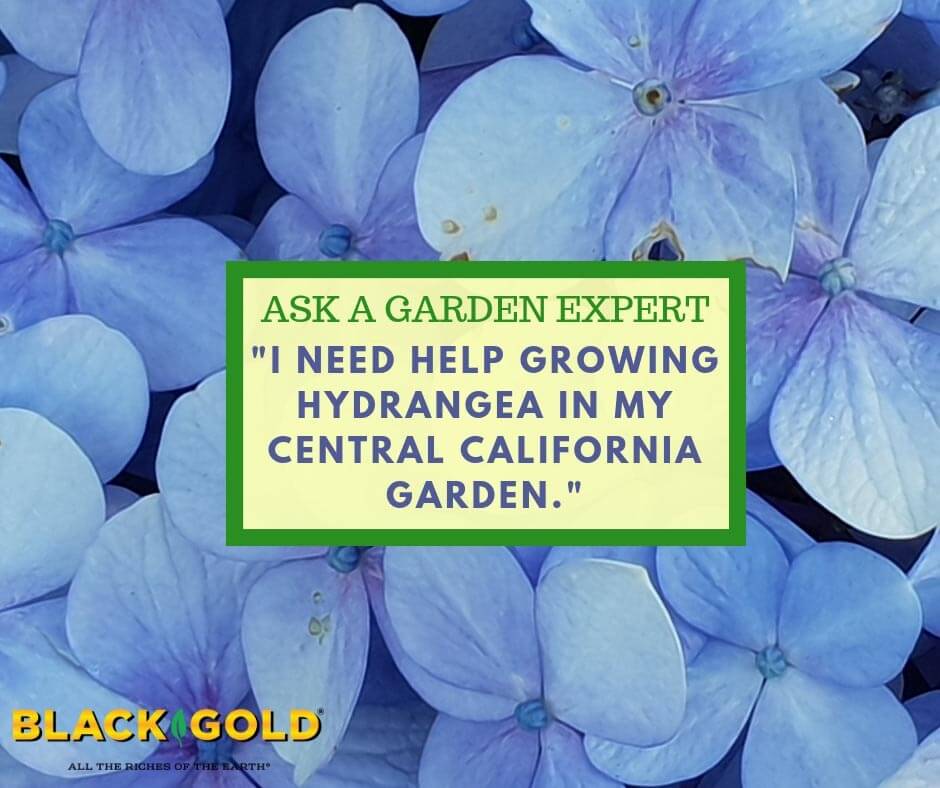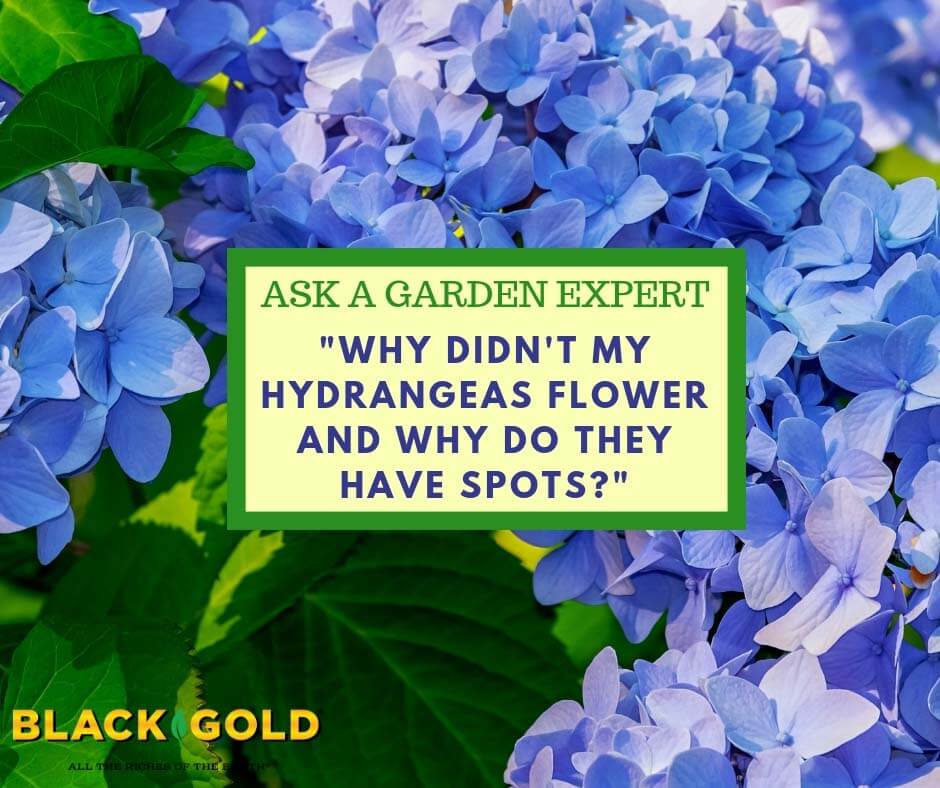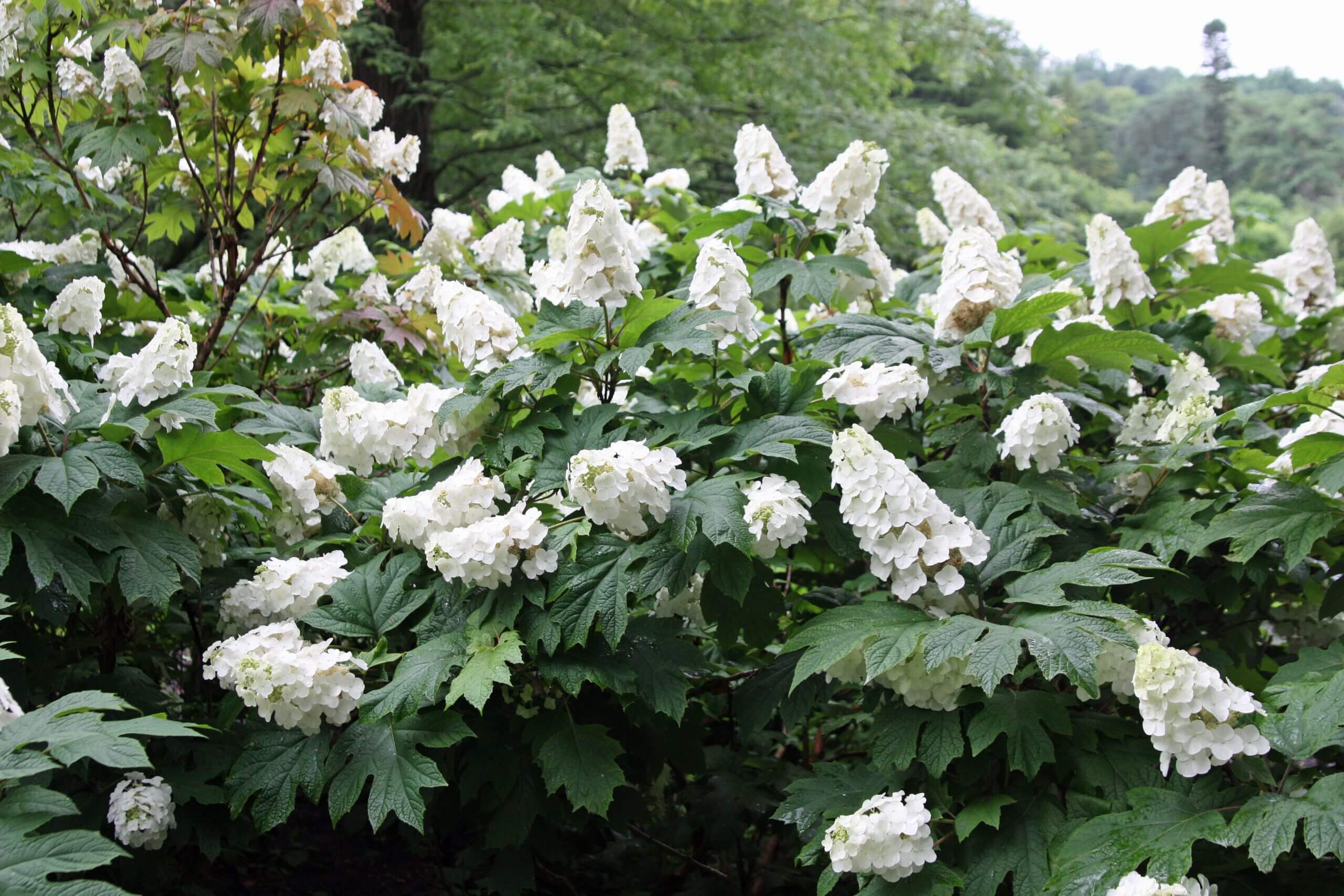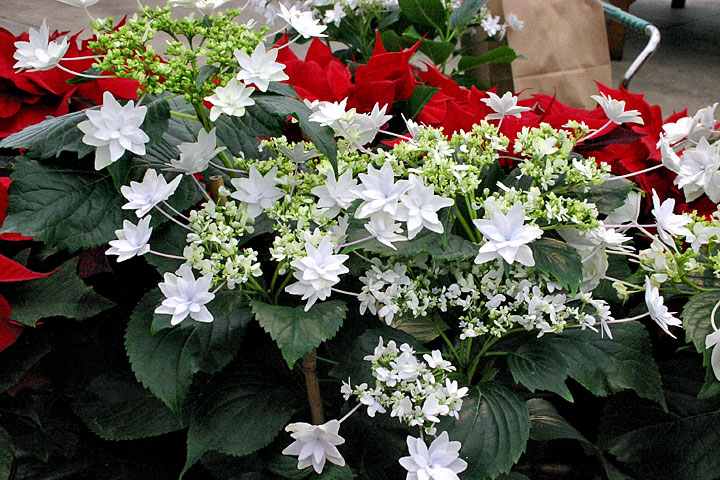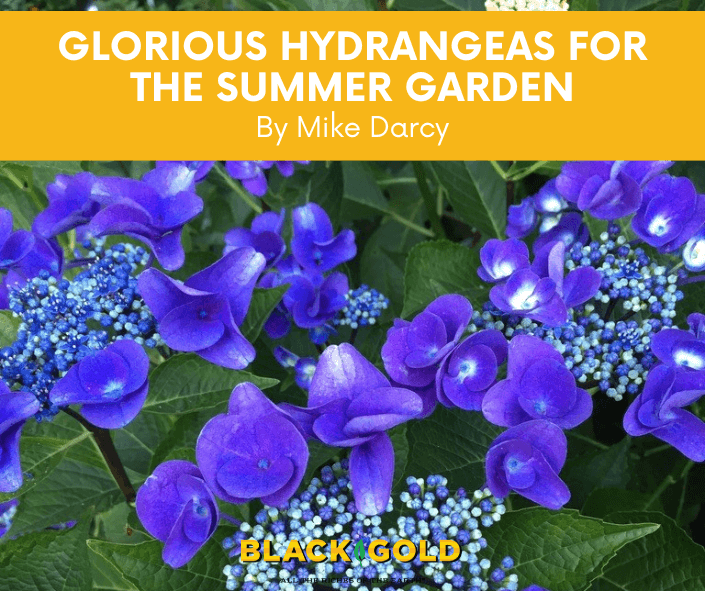
The name Hydrangea denotes water and comes from the Greek words, hydor (water) and aggos (a jar). Together the words mean ‘water vessel’ because of the cup-like form Hydrangea seed capsules. I have looked at the seed capsule, and perhaps my imagination is not quite enough to describe them as water vessels, but hydrangeas do require regular soil moisture to look their best. Give them basic care, and they are some of the easiest summer-flowering shrubs you can grow.
As with many groups of plants, Hydrangeas are very diverse in flower color, leaf color texture, and growth habit. Their flowers can be different shapes and colors will vary from solid colors of white, pink, blue, purple, and cream to some that are bicolor in shades of pink and white. Leaf color is also variable and while most are solid green, some are variegated and some have burgundy foliage. They thrive throughout much of the Pacific Northwest and in many other parts of the country, except for areas with extreme summer heat or winter cold, and some species are not adapted to the deep South.
Hydrangea Selection
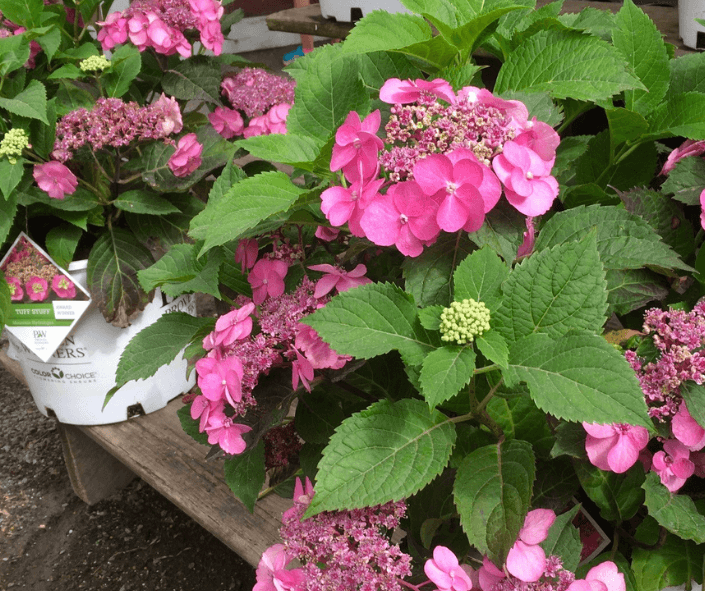
Selecting a hydrangea for the garden can be difficult because there are so many choices. It is difficult to only select one! Space is limited, and I cannot name all of my other favorites, but here is a selection of favorites from my garden.
Oakleaf Hydrangea
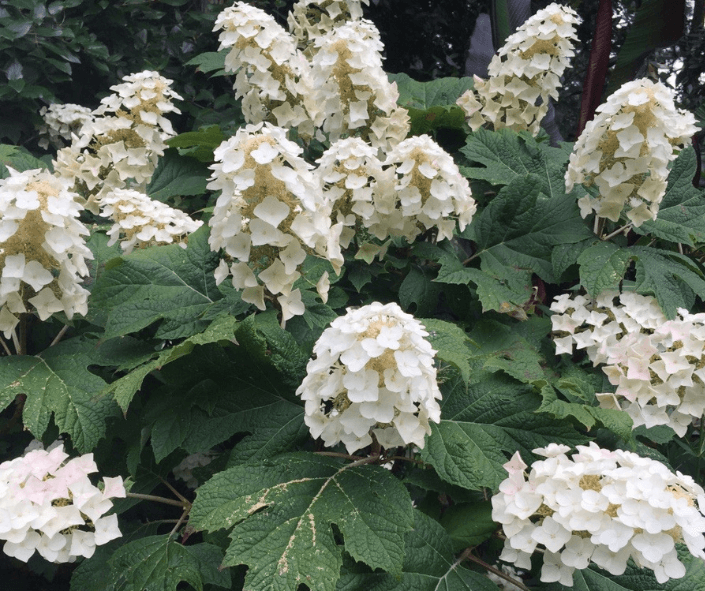
If I had to pick just one hydrangea to grow, my choice would be Snow Queen oakleaf hydrangea (Hydrangea quercifolia ‘Snow Queen’). It is named because of the oak-like shape of the leaves and snowy summer flower clusters. This hydrangea is a sturdy grower with white upright panicles of single blooms that cover the plant in early to midsummer. It has deep green leaves all summer and in the fall, they turn a superb shade of red. Another plus is that oakleaf hydrangeas tend to take more sun than many other species.
Lacecap and Mophead Hydrangeas
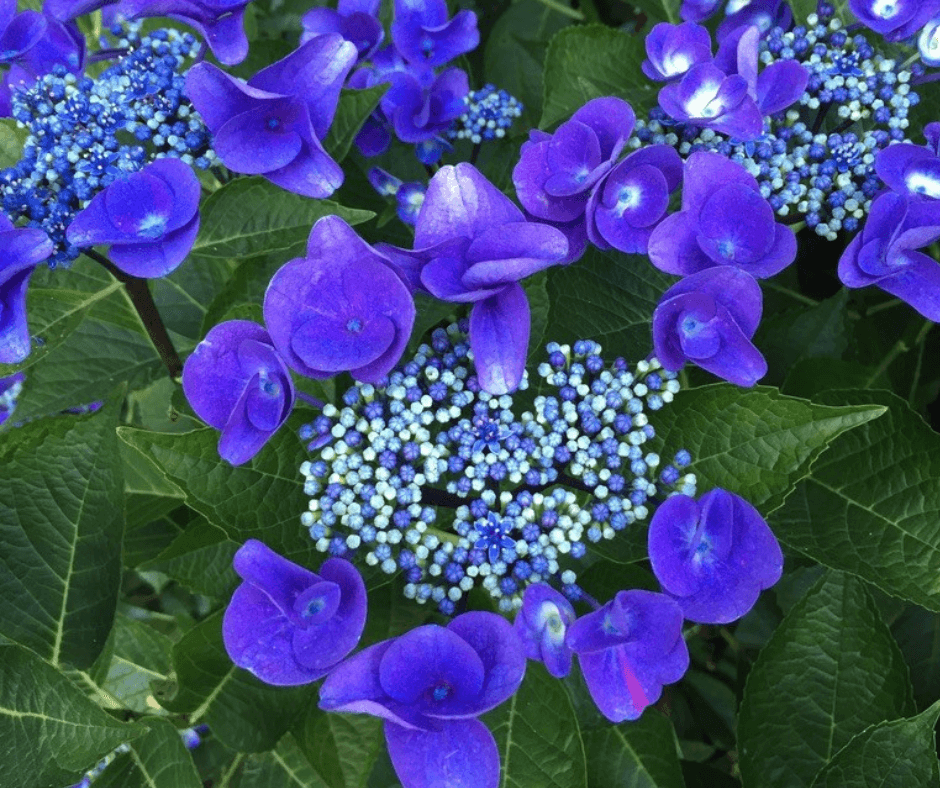
Common bigleaf hydrangeas (Hydrangea macrophylla, USDA Hardiness Zones 6-11 (a few cultivars are bred to survive to Zone 5)) and mountain hydrangeas (Hydrangea serrata, Zones 5-9) have either mophead (with a puffy head of showy flowers) or lacecap (with a head showy flowers along the margins) blooms. Mopheads are more common, but I prefer lacecaps for their stately appearance. Their flowers are in shades of blue, pink, white, red, or purple. The blue/purple or pink/red types have flower colors that can change depending on the pH of the soil. Pinkish/reddish colors denote more alkaline soil, and purplish/blueish colors indicate more acidic soil.
One of the deepest blues of the lacecap types, and a spectacular specimen in my garden, is Hydrangea macrophylla ‘Nachtigall’ (5 feet x 5 feet). I first saw one in a garden last summer, and I kept walking back to it because it was such an impressive large shrub in full bloom. Some of the flowers looked as though they were almost double. Another I have had my eye on is a compact, pink-flowered lacecap called Tuff Stuff™ (3 feet x 3 feet) from Proven Winners. It is supposed to be exemplary and has a neat, rounded habit.
Three more favorite hydrangeas are known for both their foliage and flowers. They are the lacecap ‘Lemon Wave’, which has leaves with patches of white and yellow, the bigleaf lacecap called ‘Purple Leaf Form’, with its truly burgundy foliage, and a dark-purple-leaved mophead called Eclipse® with showy red and white flowers. All are striking in the garden and cause my visitors to comment.
Smooth Hydrangea
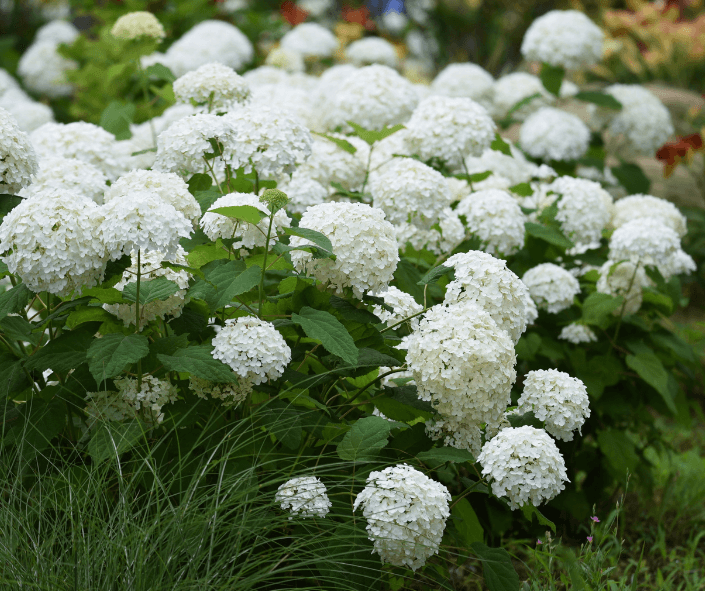
For large blooms, the native Annabelle smooth hydrangea (Hydrangea arborescens ‘Annabelle’, 3-8) is hard to beat. It is sometimes referred to as an old-fashioned snowball plant. The buds begin as pale white or light green and open to white. The blooms are very large, and the plant has a long blooming period in the summer.
Climbing Hydrangea
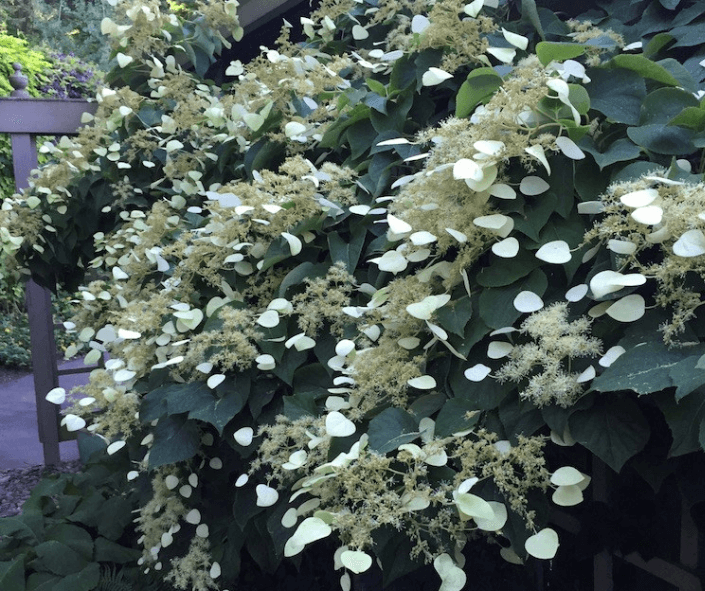
While technically not a Hydrangea, climbing hydrangea (Schizophragma hydrangeoides ‘Moonlight’, Zones 5-8) is a close relative. The climbing lianna tolerates shade. In my garden, it only receives about an hour of morning sun and looks beautiful. Its heart-shaped leaves are almost silver and the lacy summer flowers are ivory. Climbing hydrangea stems are stout and develop rootlets that attach to buildings, walls, or pergolas, so plant yours on a structure with strength and permanence.
Hydrangea Care
Hydrangeas like moist, not soggy, soil. Select a site that is protected from the hot afternoon sun. Morning sun or filtered sunlight is ideal. Water thoroughly, especially during the first year, and don’t let the soil become dry. At planting time, add a liberal amount of Black Gold® Natural & Organic Garden Compost Blend to the soil beforehand to increase organic matter. When planting hydrangeas in large pots, use Black Gold® All Purpose Potting Mix. Then add Black Gold® Perlite for increased drainage and aeration.
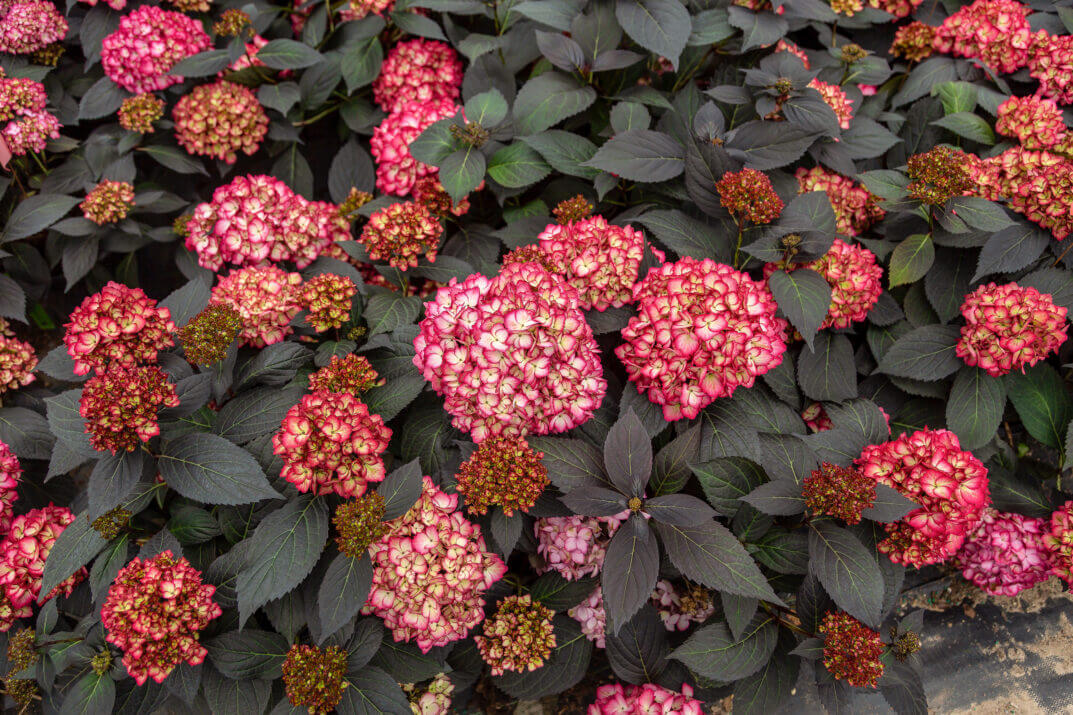
Hydrangeas species and varieties have different pruning needs. Some of the older cultivars bloom on second-year growth, and if heavily pruned in the fall, the plants will skip a year of bloom. Some bloom on new growth, so the time of pruning is not so critical. Those that bloom on new growth include the panicle hydrangea, which is not mentioned above (Hydrangea paniculata ‘Limelight’ is a good variety to try), and smooth hydrangea. Check the plant tag for pruning requirements. (Click here for more pruning guidelines from Proven Winners®.)
There are so many hydrangeas to choose from, and given the right planting conditions they can provide beauty in the garden for many years. A good rule of thumb as to how particular plants will perform in your garden is to talk with friends or neighbors who have them. If their plants are thriving, yours should, too. The month of May is an excellent time to plant. For more Hydrangea information, contact the American Hydrangea Society.


